empire state of mind
We recently found ourselves poking around Albany, NY while there for the wedding of our nephew Jason and his bride, Michaela. Our daughter Kirsten’s modern spidey sense and our quest for architourism led us to the brutalist New York State Cultural Education Center (completed 1978, designed by the architecture firms of Harrison & Abramovitz and Carson, Lundin & Shaw). An ominous stairway across from the building looked intriguing and to our surprise led to The Governor Nelson A. Rockefeller Empire State Plaza. We had no idea what we stumbled upon, but the striking modern architecture, reflecting pool and sculptures warranted more investigation, and this is what we found.

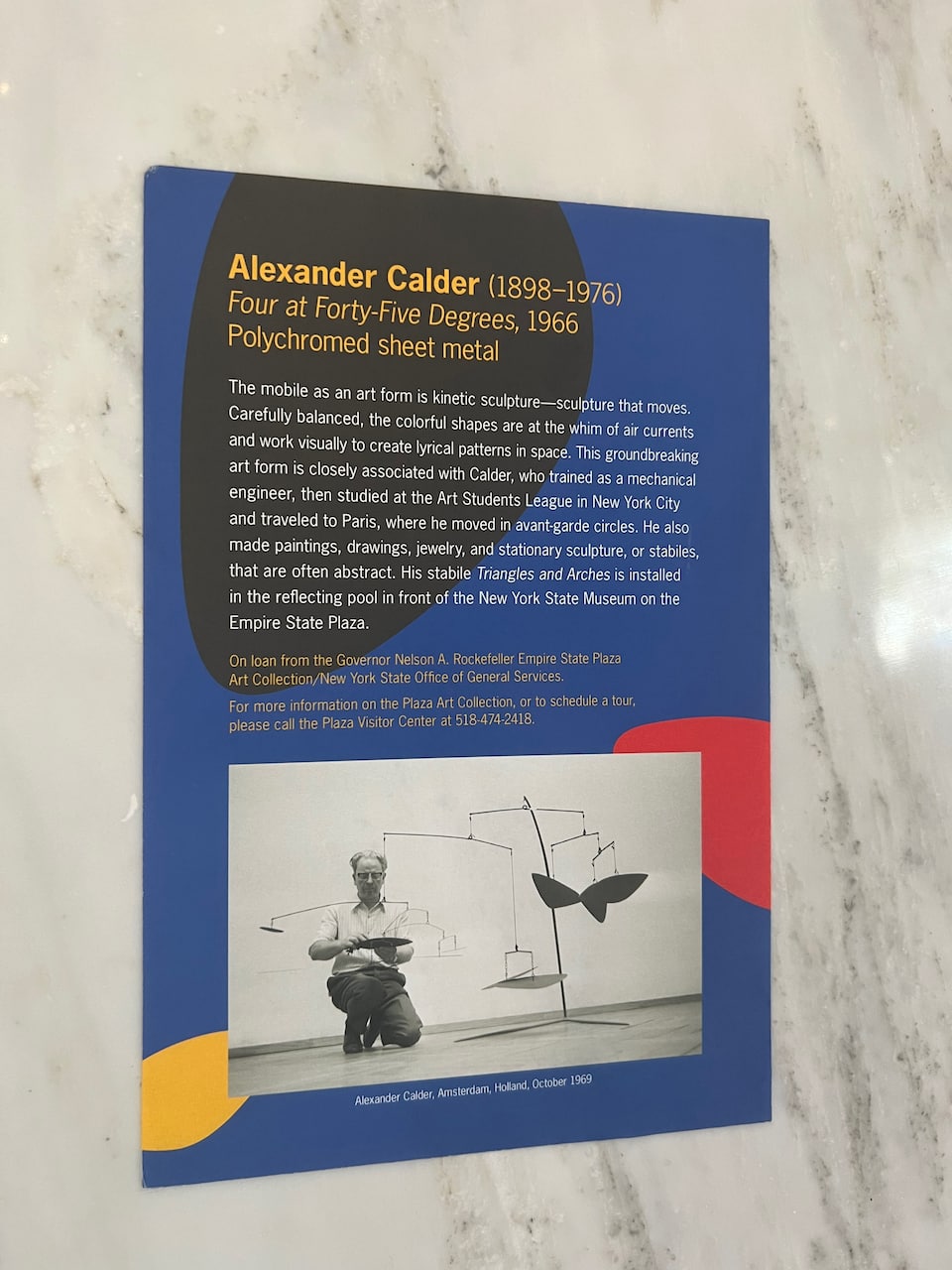

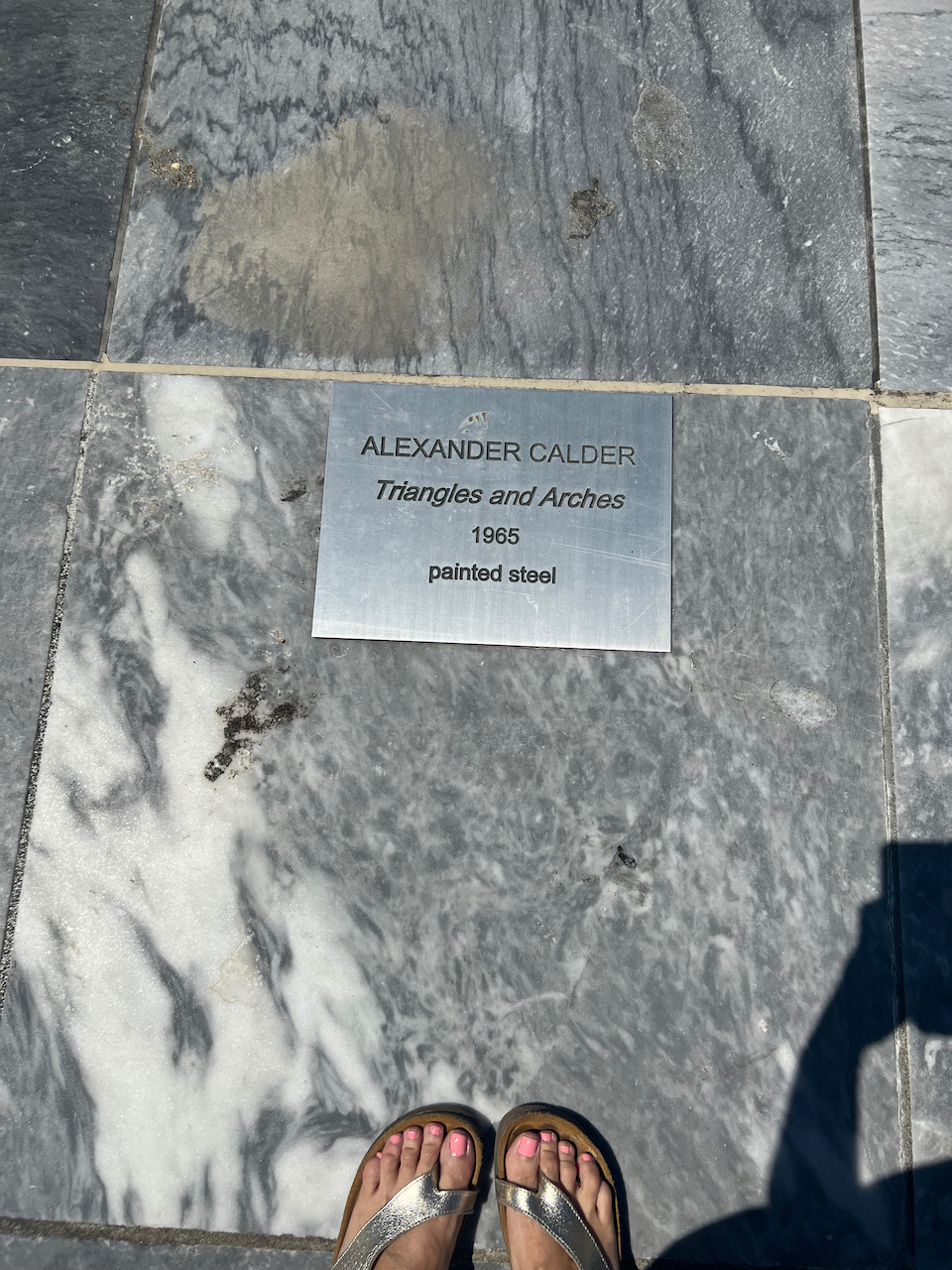
The complex, built between 1965 and 1976 was Rockafeller’s response to a visit from Princess Juliana of the Netherlands. Embarrassed by touring the princess through a city neighborhood known as “the Gut,” he decided his state capital should be more impressive.
Rockafeller conceived of the basic design of the complex with architect Wallace Harrison on a napkin on a flight aboard the governor’s private plane. They used the vast scope and style of Brasilla, Versailles and Chandigarh as models for their massive government plaza, meant to be appreciated from across the Hudson River as the dominant feature of the Albany skyline.
The state obtained possession of the 98.5 acre site in 1962 through eminent domain, and proceeded to spend 2 years razing 1,200 structures and displacing 7,000 residents. A chance meeting with a security guard from The Egg gave us a lowdown on the history of The Empire State Plaza. His pride in this marvel was palpable. The first building to be completed was the Legislative Office Building in 1972, and the last was the Egg in 1978. Though the plaza was dedicated in 1973, it finally began full operation in 1976 at a total cost exceeding $1.7 billion. More than 11,000 state employees work at the complex. On a Saturday afternoon in July, it was all but deserted.
We noticed that much of the older part of the city bore a strong resemblance to Over the Rhine, with a seemingly endless supply of Italianate architecture. Makes me wonder if the Gut was more of the same? How ironic that the dominant brutalist architecture of the plaza and its buildings is now on the “under appreciated” and dare I say “endangered” architecture list. We hope the good people of New York value this architectural style more than the University of Cincinnati does.
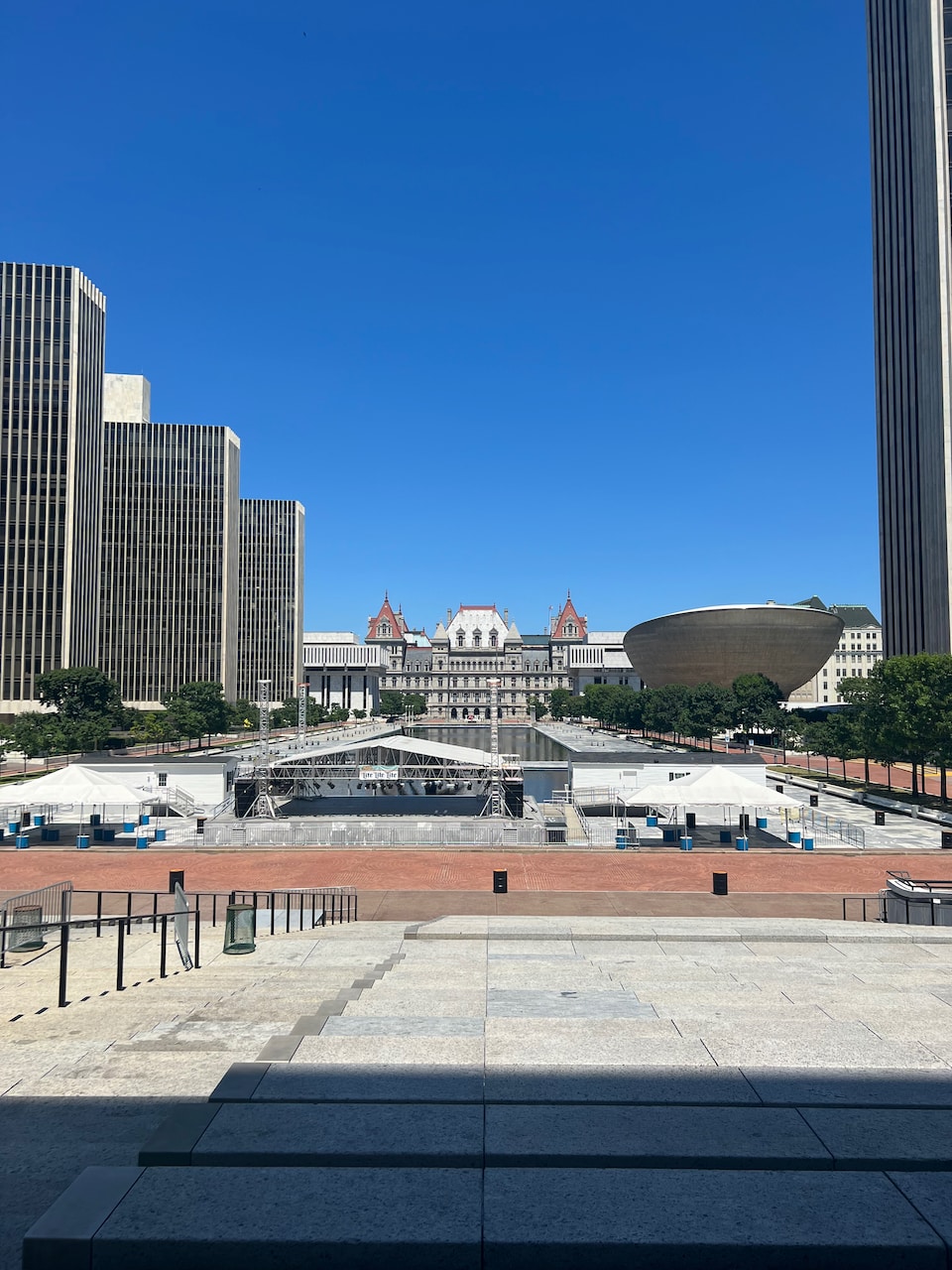
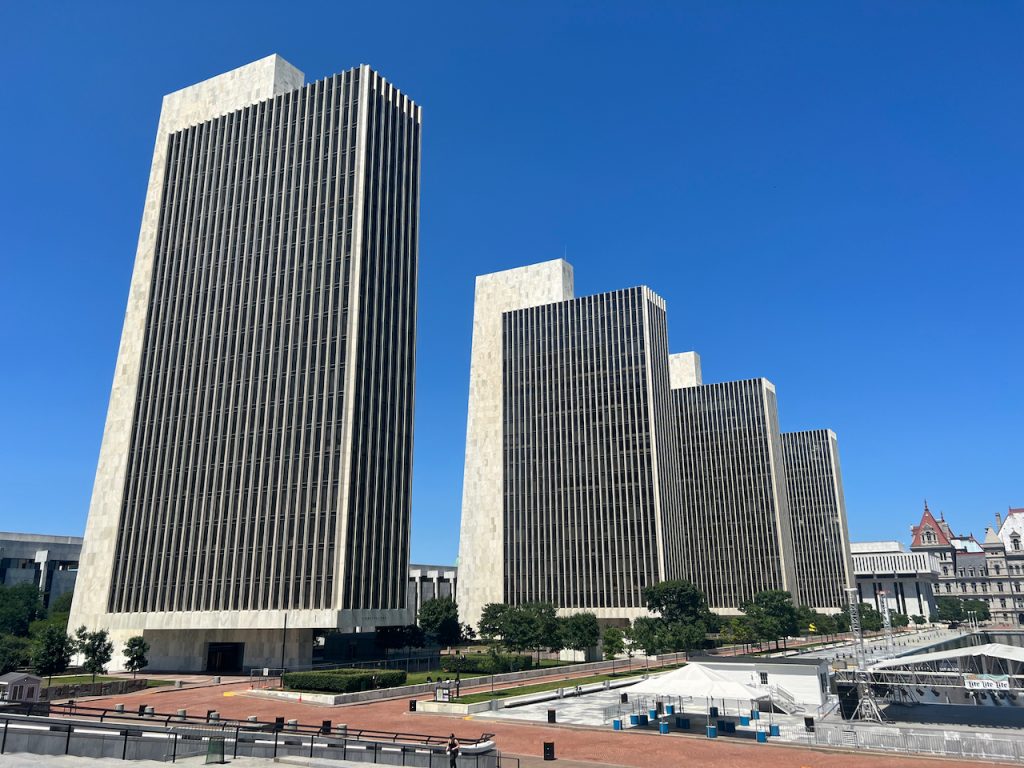

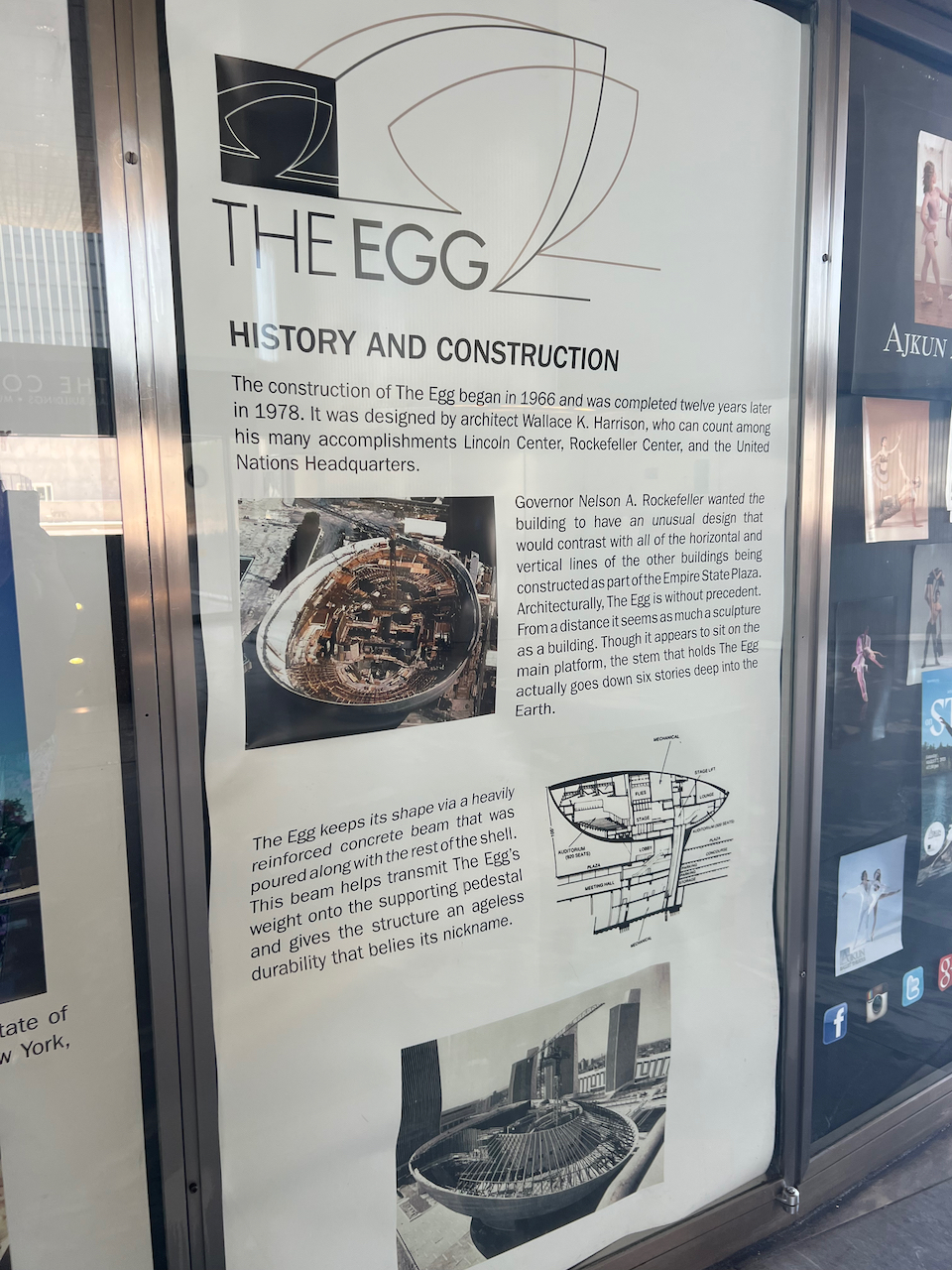
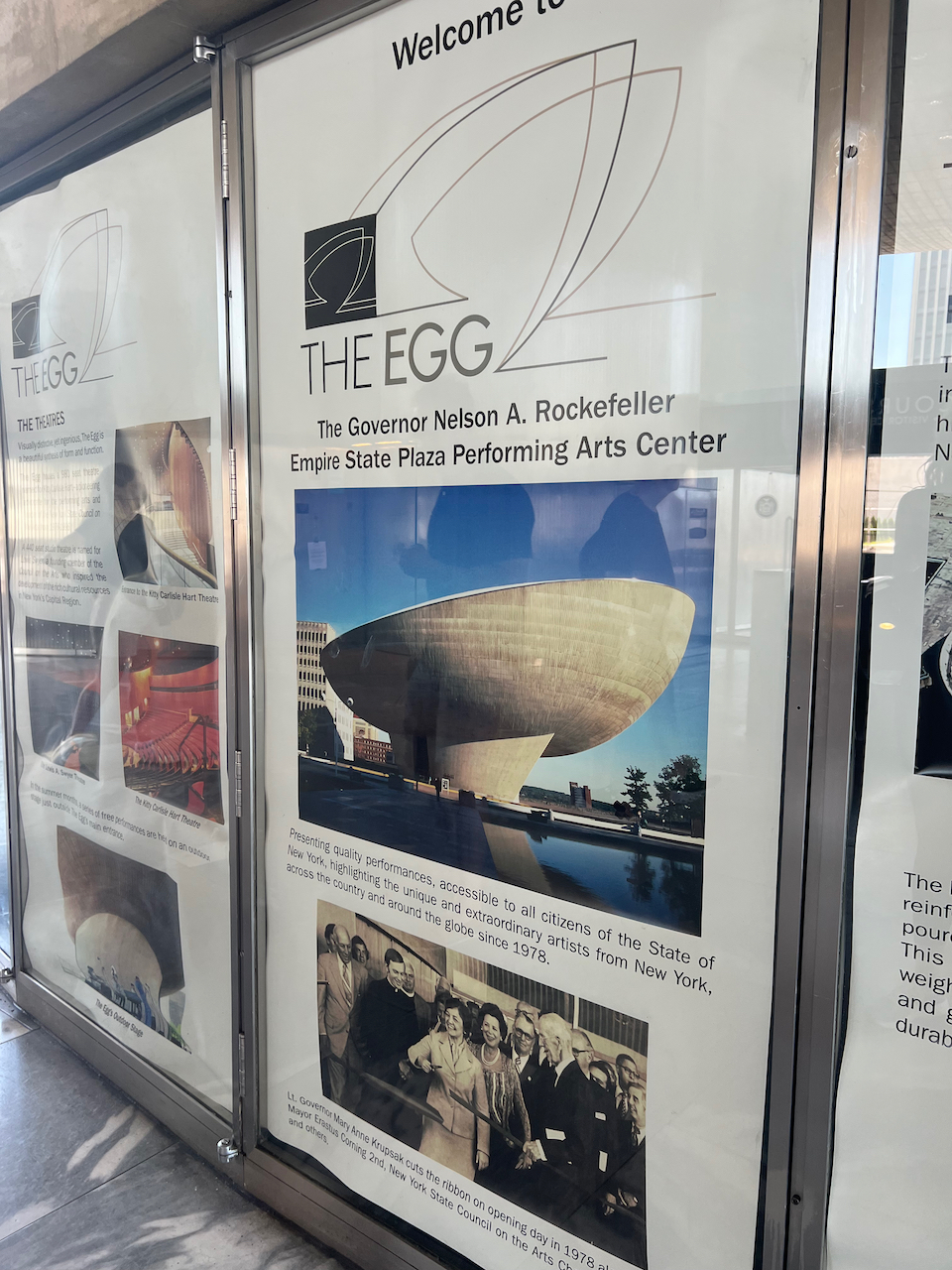
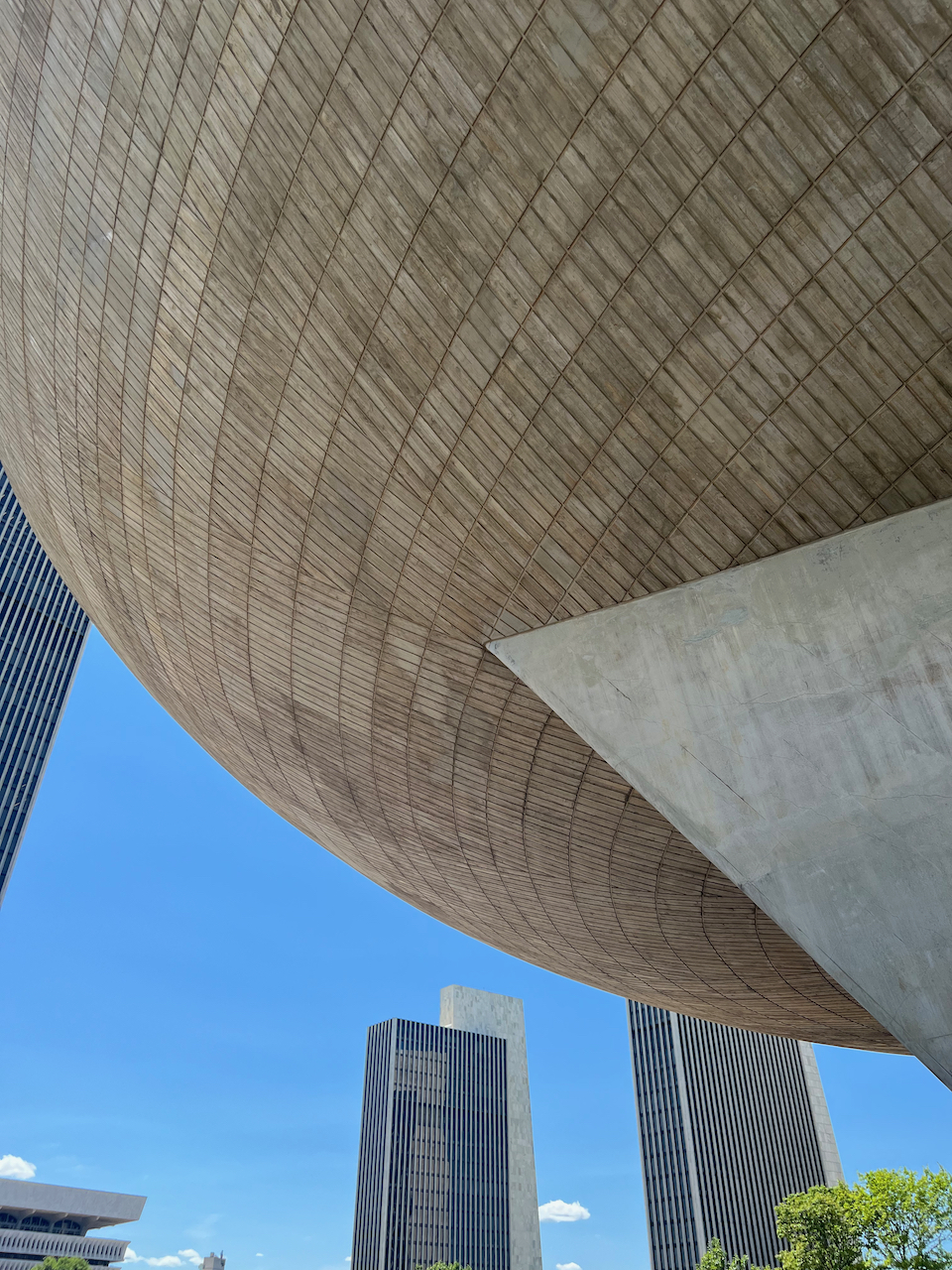
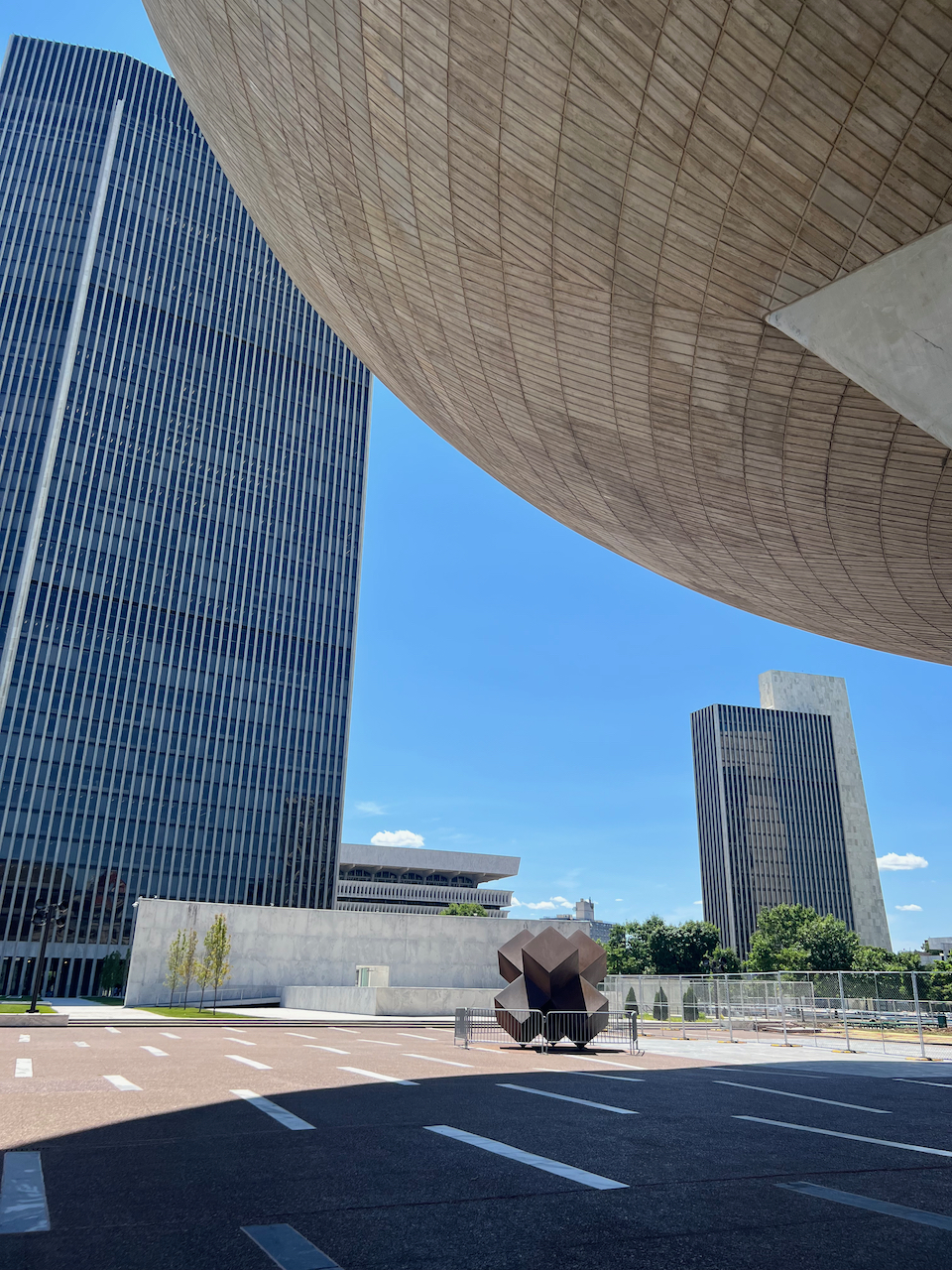

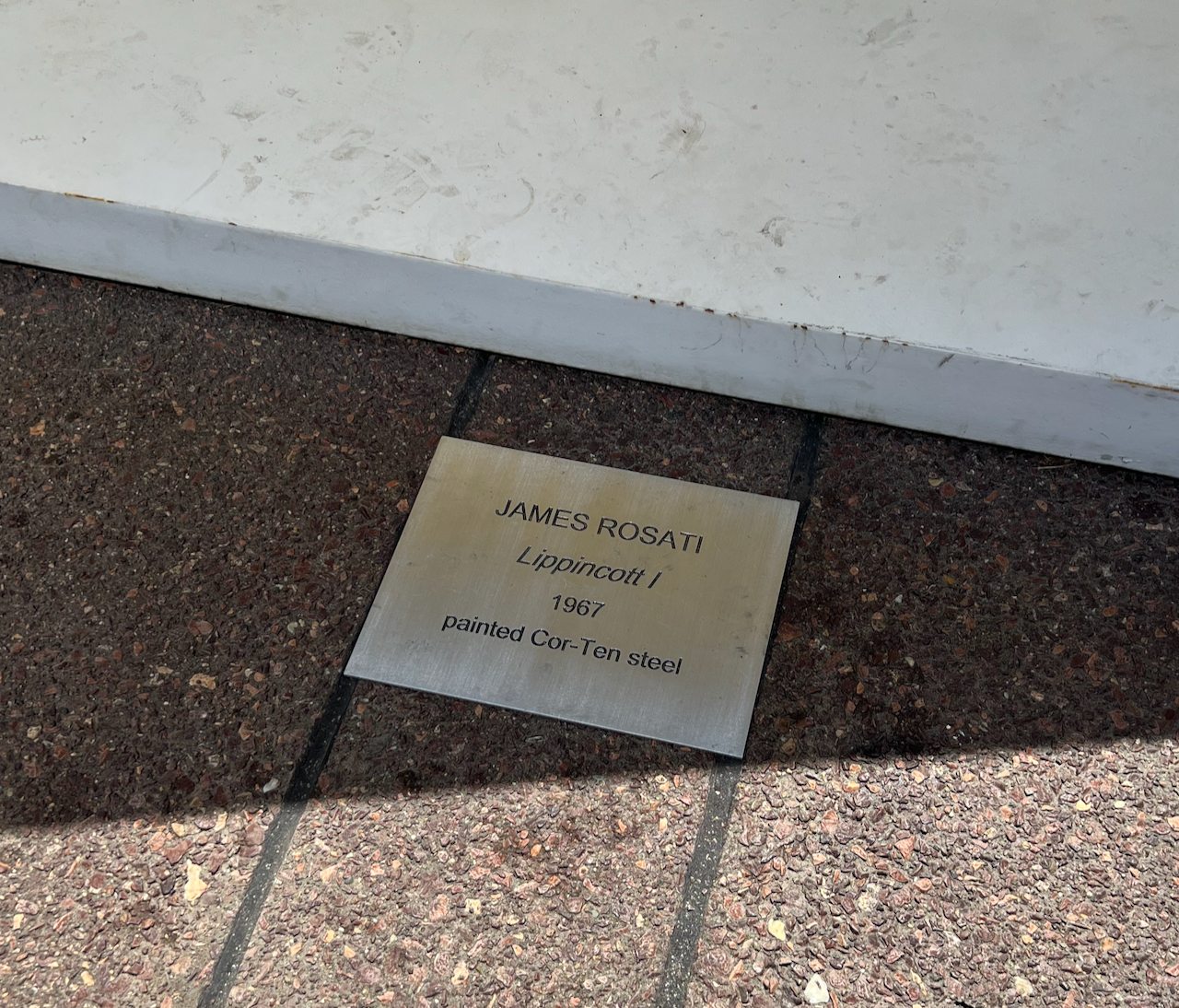
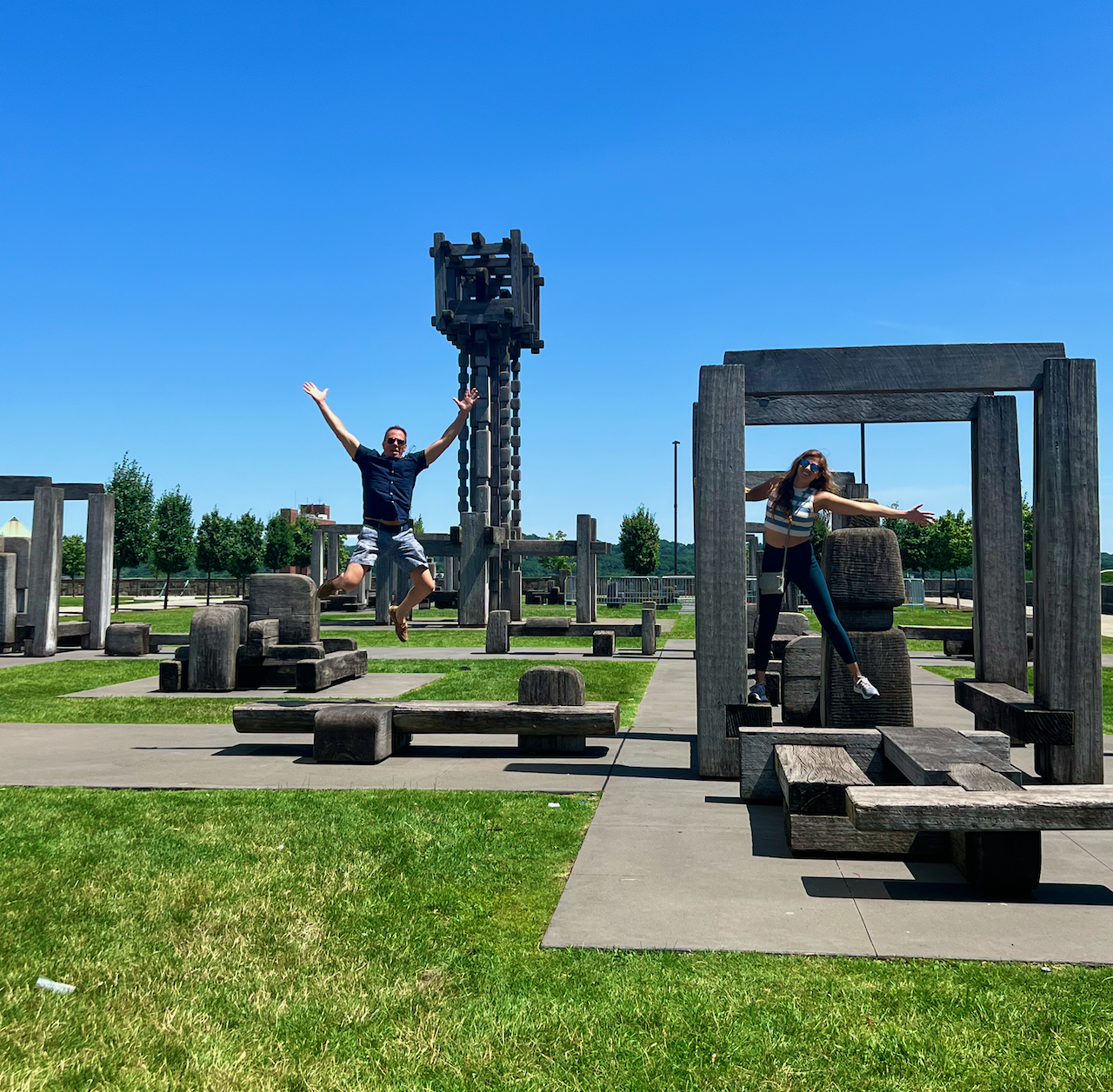
featured publications
research + articles
- thesis on the work of architect james (jim) alexander melissa marty, 2002
- benjamin dombar various sources
- abrom dombar various sources
- woodie garber various sources
- rudy hermes various sources
- dick calef various sources
- carl strauss + ray roush various sources
- and the rest
modern books
- 50 from the 50s: modern architecture and interiors in cincinnati udo greinacher, elizabeth meyer, susan rissover, patrick snadon, margo warminski, 2002
- atomic ranch midcentury interiors michelle gringeri-brown (author), jim brown (photographer), 2012
- implosion elizabeth garber, 2018
- charley harper, an illustrated life, todd oldham & charley harper, 2007
- about design: insights and provocations for graphic design enthusiasts, gordon salchow, 2018
- cincinnati's terrace plaza hotel: an icon of american modernism, shawn patrick tubb, 2013







